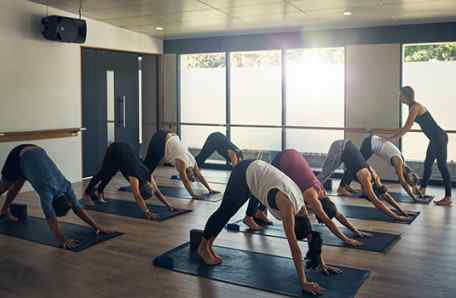An annular tear is a tear in the outer wall of a spinal disc. This can be caused due to traumatic injury but mostly occurs with natural aging. The symptoms include numbness, radiating pain, and muscle weakness, along with the length of nerve compression.
One of the most common treatments for annular tears is yoga. Different yoga poses help the patients to manage the pain effectively, eliminate the symptoms, and strengthen the muscles. Furthermore, this helps in reducing the stress on the spine. So what are these yoga poses that you can do in this condition? Scroll down a bit to find all the answers.

Standing Poses –
Standing poses along with the triangle poses helps lengthen the spine. Additionally, it gives stretch to the lower muscles. In this way, it provides gentle traction that helps in decompressing the vertebrae. Remember to keep your torso straight and in a neutral position.
Passive backends –
Passive backend poses in yoga allow using hands and elbows for support. These are the spinal extensions that help in shifting the damaged disk away from the compressed nerve root. This shifting provides pain relief. The example of one such pose is –
● Baby cobra – For this pose, lie down on your belly with a slight difference between your feet. Then place the palms under the shoulders. Start pulling the chest forward. Keep your elbows close to the body and look slightly up. Take at least three deep breaths here. This pose is not only useful in treating the annular tear but is also helpful in enhancing the flexibility, breathing, and mobility of the body.
Active backends – The poses in the active backends strengthen the spine muscles. This provides stability to the muscles and enhances the blood flow to the damaged disk. All this fastens the process of healing. One such example is –
● Locust pose – Lie down on the stomach extending your legs, and keep your chin resting on the floor. Extend the arms, keep the palms facing up, and pelvis bone firm on the ground. Lift the head, legs, arms, and chest while exhaling. Rollback the shoulders and extend the arms behind you to make them parallel. If you are finding it difficult to lift the legs, contract them. Keep the ankles, knees, and toes together. Do not forget to keep the backside of the neck long. Try this pose for 2-4 breaths for maximum benefit. This will strengthen the back and stimulate the abdominal organs.
If you are still unsure how to do these poses, you can always look for a pain management clinic to help you. But, don’t let yourself suffer from chronic pain.
Do you know that there are other things you should avoid if you have been diagnosed with an annular tear? What are those? Read further to know more.
Deadlifts – Deadlifts are vital in building the core strength of an individual. Unfortunately, lifting a heavyweight with this condition is highly risky for the tears as it requires you to bend repeatedly. To make up for the deadlifts, you can try leg extensions and planks.
Running – Running is a high-impact activity, so it can worsen the condition of annular tears. Rather than running, you can choose to swim or bike, which will also improve your cardiovascular conditioning.
Final Words
Keep moving in this condition with the poses as mentioned above. It might be painful initially, but you will soon get through it. Happy healing.






